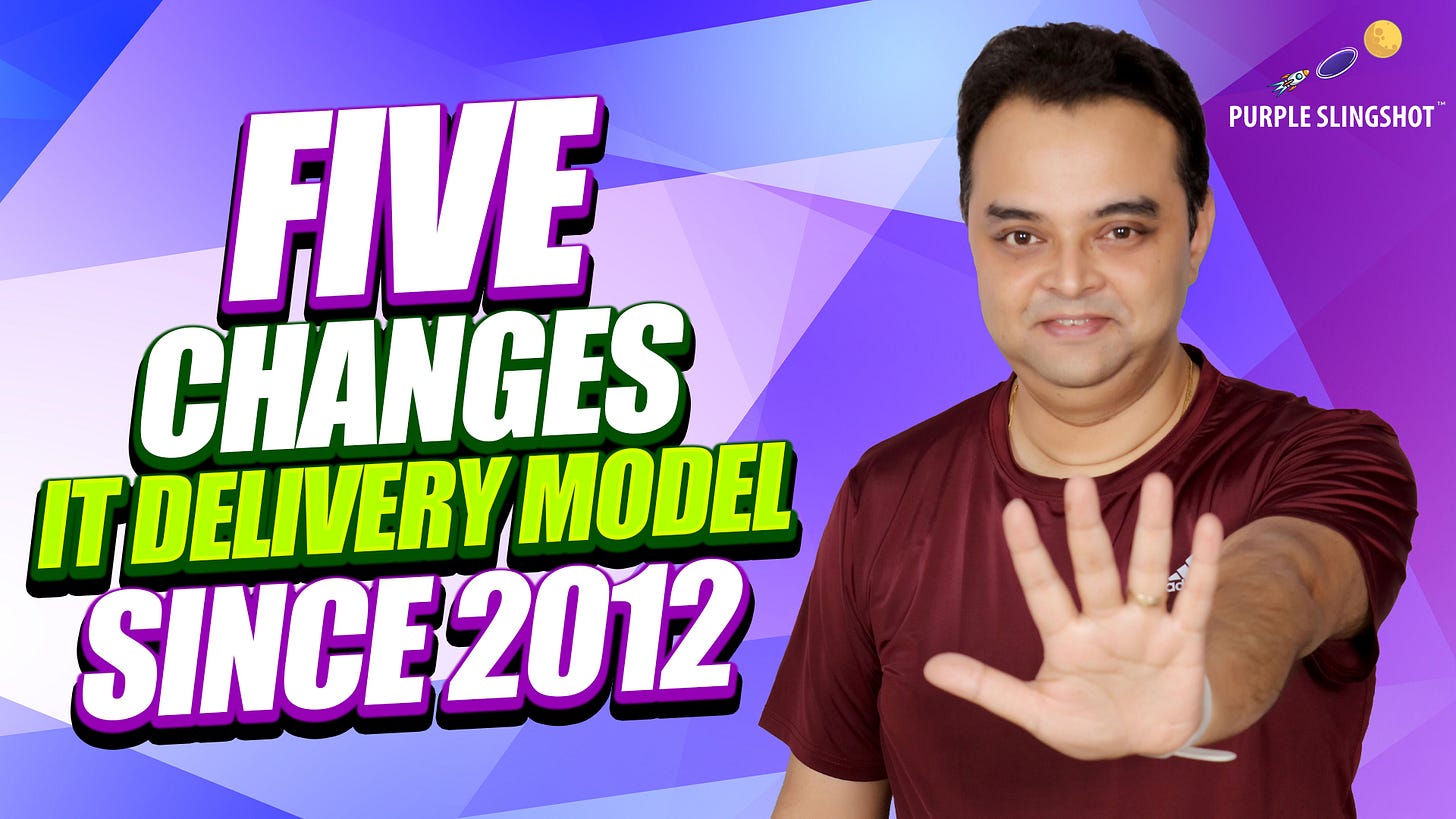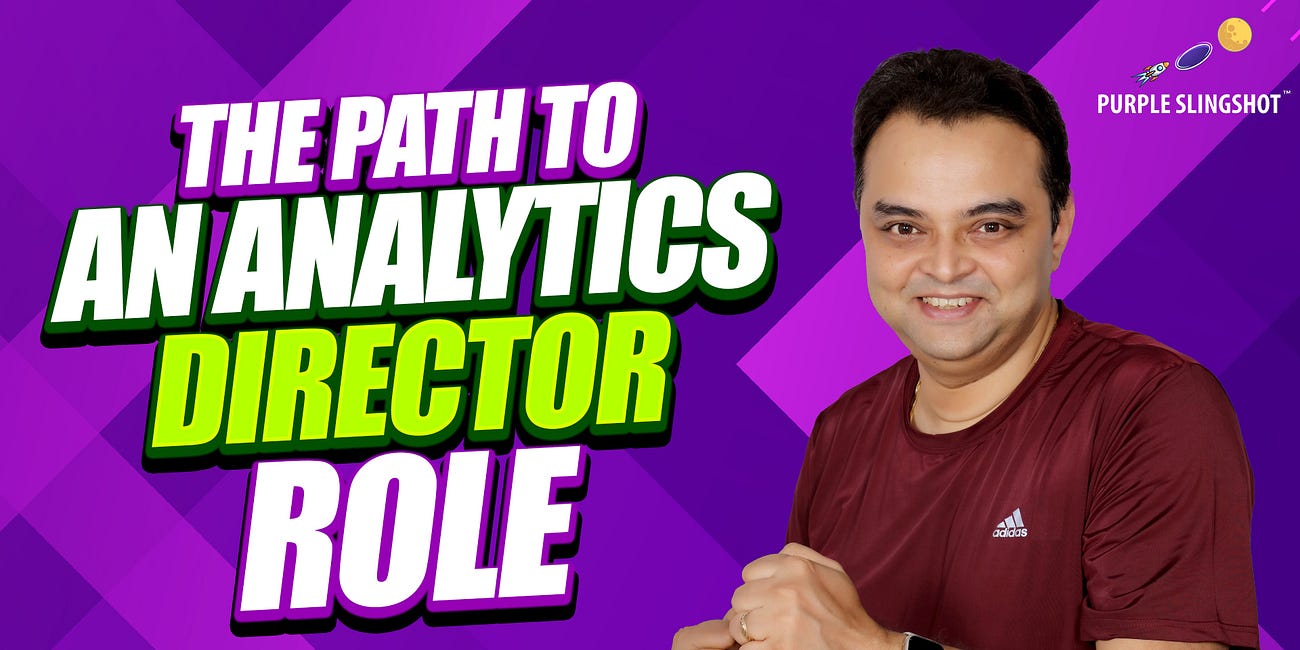5 changes in the IT Delivery model since 2012 and the impact on your job role today
Value based outsourcing, end of the build operate transfer (BOT) era, rise of SAS & more
In this edition of the newsletter I would talk about 5 changes that have happened to the IT delivery models since 2012 and how these changes impact our software job role for today.
This newsletter talks about 5 IT delivery model changes:
Change 1 - The BOT (Build -Operate - Transfer) model is dead!
Change 2 - Changes in demand patterns in enterprise software
Change 3 - Digital transformation as the core driver
Change 4 - Value based outsourcing
Change 5 - Digital skilled workforce became mandatory
Change 1: The BOT (Build-Operate- Transfer) model is dead
In 90’s the Build operate and transfer model was born. The concept was very simple. The main premise was based on cost arbitrage opportunity by setting up offices in low-cost zones and then delivery with nearshore and offshore locations by following the sun approach which is the total coverage timings of IT Systems.
The main premise of the BOT model was location and staffing for ‘market entry’.
The IT partner would set up a local setup called ODC and “Build” the IT systems delivery.
Then in the next phase, there was an “Operate” phase in which the IT partner was responsible for driving IT systems and applications with an SLA/OLA-driven environment with an established process for change management.
There was also a stage based on transfer fee to transfer back everything to the customer once a steady state of IT Operations has been reached via employee re-badge, Knowledge transfer etc.
The main USP of this model was location and infrastructure as most often customers were not willing to go through all these setup processes themselves and at such a large scale.
It was a win-win as IT partners were able to build tacit know-how and also drive enormous value from economies of scale by managing multiple BOT contracts for several customers.
Things have changed now.
The challenge now is not infrastructure set-up by keeping a dynamic poll of talent who can drive the company in fast iterations as directed by the corporate strategy. The current challenge is not market entry. Rather, an organization can recruit, hire, develop, and retain the right talent in digital space like Cyber, ML, AI, Data etc.
This, in turn, has encouraged the setup of various GCCs where key IT systems like MDM, core data products, and Security come back into insourcing as customers were no longer willing to play the cost-saving game here but focus on co-locate, co-design, co-build, co-deliver with partners in their centres.
CHANGE 2: Changes in demand patterns in enterprise
In enterprise software and multi-million outsourcing deals, The rise of 'as-a-service' models, including Software-as-a-Service (SaaS), Platform-as-a-Service (PaaS), and Infrastructure-as-a-Service (IaaS), reflecting a shift towards more flexible, subscription-based services that reduce the need for heavy upfront investments and allow for scalable IT solutions.
The previous IT services were mainly Capex-driven and were seen as asset-based investments. Things started changing in 2012 with cloud and SaaS adoption that drove the service model.
Here the customer was willing to pay a recurring fee with renewal and termination flexibility.
This put the previous resource-heavy Capex model over its head to become an Opex model. This in turn had an effect on team size and scale thresholds needed for a IT project.
The other side of the change in demand was triggered from IR4.
IR4 moved the focus away from packaged software to SAS or Open Source based big data, machine learning and application systems.
Skills vary when you move away from packaged software based stack to an open source based stack.
Change 3: Digital transformation became the core agenda
Post circa 2012 there was a change from digitization to digital transformation. The change hence was from the IT era digitization towards digital transformation. Digitization is the conversion of a paper process like say order to cash to an ERP process.
But Digital transformation refers to the integration of digital technology into all areas of a business, fundamentally changing how the business operates and delivers value to customers.
Let us take an example from the Banking Industry:
In the regulated banking industry, digital transformation can be exemplified by the adoption of digital banking platforms that offer services like online account opening, mobile banking, virtual customer service, and AI-driven personalized financial advice.
One specific example is the implementation of blockchain technology for secure, transparent, and efficient transactions. A bank might introduce a blockchain-based system for international wire transfers to enhance security, reduce transaction times from days to minutes, and lower operational costs.

This not only improves the customer experience by offering faster, more reliable services but also addresses regulatory compliance through blockchain's inherent features of immutability and auditability, ensuring transparency and traceability of transactions.
For example, roles of UX, Full stack designers, Product Managers etc were now needed along with traditional software roles. Many companies were not ready to accommodate such a diverse group under one roof.
Point 4 – Value-based outsourcing
Post 2012, customers moved into more of a hybrid outsourcing model. Some went with a mix of insourcing and outsourcing whereas some aligned with SAS services which caused a dent in spending in traditional outsourcing.
Value-based outsourcing where the key driver is value and continuous value reporting became the norm. Previously, projects were measured more on traditional accounting standards as done for assets such as IRR, ROI on capital invested etc.

But now the value-driven reporting extended to brand equity, scores from value clinics held at customer sites, User feedback, Playback of the project to the business objective, and Evidence of business case continuity. These reports were much more complex than earlier established value parameters like defect ratio, Resource deployment metrics, milestone delivery etc.
The transition to value-based outsourcing emphasized aligning IT initiatives with strategic business goals. Outsourcing decisions began to factor in how IT services contribute to overarching business objectives, such as market expansion, CSR, Sustainability, customer satisfaction improvement, and competitive differentiation.
Point 5 – Digital skilled workforce became mandatory
The shift towards a digital workforce in enterprises has been significantly influenced by changes in IT delivery models, especially with the integration of technologies like ML, big data, and cloud computing.
Machine Learning (ML) Roles:
Example: The adoption of ML in various business processes, from customer service with chatbots to predictive maintenance in manufacturing, has created a demand for ML engineers and data scientists. For instance, a financial institution employing ML for fraud detection would require professionals skilled in algorithm development, data processing, and model training, turning traditional data analysis roles into more specialized ML roles.
Data Roles:
Example: The emphasis on data-driven decision-making has elevated the role of data analysts and data engineers, who are now central to extracting insights from vast amounts of data. In retail, for example, data analysts might leverage customer data to personalize marketing campaigns, requiring a blend of statistical, programming, and business skills to transform raw data into actionable strategies.
So how do these changes in the delivery model impact your job today?
The various changes in IT delivery models, particularly in the context of digital transformation, cloud computing, and the shift towards more agile and flexible service models, have significant implications for middle-career employees in the IT sector.
Here are 4 key impacts:
1. Need for Continuous Learning: The rapid pace of technological advancements necessitates ongoing learning and skill development. Middle-career employees must adapt by acquiring new skills in areas such as cloud services, data analytics, cybersecurity, and emerging technologies like AI and IoT.
2. Career Transition Opportunities: Changes in IT delivery models open up new career paths and roles that may not have existed earlier, such as cloud architects, data scientists, cybersecurity analysts, and DevOps expert.
3. Shift in Role Dynamics: Traditional roles may evolve or change in scope, with an increased emphasis on strategic thinking, innovation, and business alignment. Employees may need to focus more on adding value through technology rather than just managing and maintaining IT systems or scope.
4. Job Security and Outsourcing Concerns: The trend towards outsourcing and automation may create job security concerns for some roles, particularly those that are more administrative or repetitive. Professionals may need to pivot towards more strategic, creative, or complex tasks that are less susceptible to outsourcing and automation. This factor may also impact work-life balance.
I hope this video was helpful to you and if you liked this video then I would request you to share this in your WhatsApp group. Also, like and subscribe to this channel. Subscribing is free to you but creates a lot of difference for me. Thank you.
Read Next →
The path to an Analytics Director Role for middle career folks
In this newsletter, I will talk with my experience in analytics about the role of Director Analytics. This newsletter would be helpful if you are looking to discover data analytics director role from a traditional senior IT role. This newsletter edition is divided into 4 segments:








